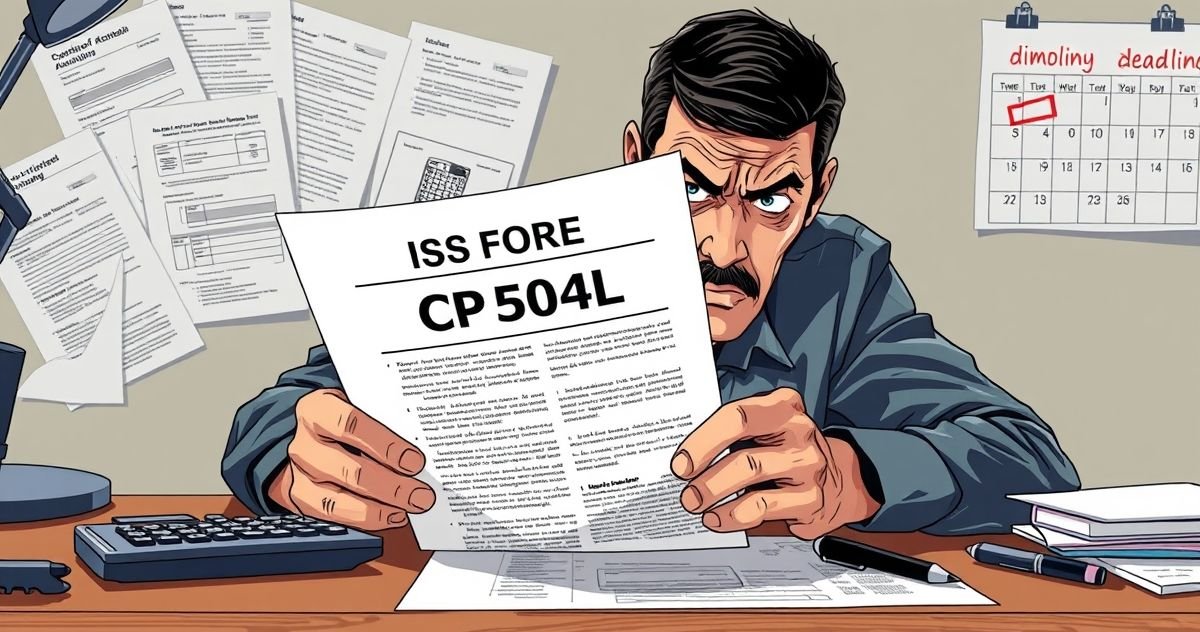Understanding the CP504L Notice: A Critical IRS Warning
The CP504L Notice is a pivotal correspondence from the Internal Revenue Service (IRS), often perceived as a wake-up call for taxpayers. This notice is dispatched when there is an outstanding balance on a taxpayer’s account, and it symbolizes the IRS’s intention to escalate collection measures if the debt remains unaddressed. Known formally as the ‘Notice of Intent to Levy’, the CP504L represents a critical step in tax administration and compliance, aiming to both inform and urge taxpayers towards immediate action.
What is the CP504L Notice and Its Primary Purpose?
Primarily, the CP504L Notice serves as an urgent reminder that the taxpayer owes money to the IRS and that the debt must be settled promptly to avoid severe collection actions. Unlike earlier notices that might inform a taxpayer of overdue taxes, the CP504L emphasizes the immediate need to resolve the debt. It communicates the potential for federal tax lien filing, which could gravely impact the taxpayer’s credit and financial standing.
Key Features or Components of the CP504L Notice
The CP504L Notice contains several essential elements that taxpayers need to review carefully:
- Balance Due: The notice specifies the total amount owed, including any interest and penalties accrued up to the date of the notice.
- Payment Options: Detailed instructions for settling the outstanding balance are provided, including payment methods and deadlines.
- Intent to Levy: The notice clearly states the IRS’s intention to levy if the tax debt is not settled. It serves as a legal notice, allowing the IRS to begin levying your assets if payment isn’t made.
- Contact Information: Information on how to contact the IRS for further clarification or to discuss payment arrangements is included.
Relevant Filing or Compliance Requirements
Receiving a CP504L Notice implies that earlier IRS notices have been ignored or unresolved. Compliance involves immediate settlement of the outstanding balance or arranging a payment plan to prevent further action. Taxpayers should also ensure that their recent returns are filed correctly to avoid future notices.
Penalties or Consequences for Non-Compliance
The failure to respond to a CP504L Notice can lead to serious financial ramifications:
- Liens and Levies: The IRS can enforce a federal tax lien against your property or proceed with levying wages, bank accounts, or other assets to recover the due amount.
- Increased Penalties and Interest: Unaddressed tax debts continue to accumulate interest and penalties, significantly increasing the overall amount owed.
- Impact on Credit Score: A federal tax lien can dramatically affect an individual’s credit score, making it difficult to secure loans or credit in the future.
Importance of the CP504L Notice in Tax Resolution
The CP504L Notice plays a crucial role in tax resolution and financial compliance. It serves as a final warning before the IRS resorts to more aggressive collection methods, providing a last opportunity to resolve tax debts voluntarily. Recognizing the gravity of this notice and acting promptly can prevent more severe financial consequences.
Taxpayers can leverage the CP504L as a platform for negotiation, whether by setting up a structured Installment Agreement or applying for an Offer in Compromise if they believe they cannot pay the full amount. Additionally, consulting with tax professionals can provide strategies for effectively managing the debt and ensuring future compliance to avoid similar issues.
Understanding and responding to CP504L Notices is not merely about resolving the existing tax issue but also about preparing for broader financial health. Proactive measures can transform what initially feels like a dire situation into an opportunity to reassess financial priorities and establish a foundation for financial discipline and compliance.
Conclusion
In summary, the CP504L Notice is more than just a letter from the IRS—it’s a critical indicator that immediate attention is required. By understanding its contents, implications, and the required response actions, taxpayers can mitigate the risk of escalating financial consequences and work towards restoring their financial standing. Timely and informed actions are key to managing IRS communications effectively, ensuring compliance, and securing one’s financial future.
